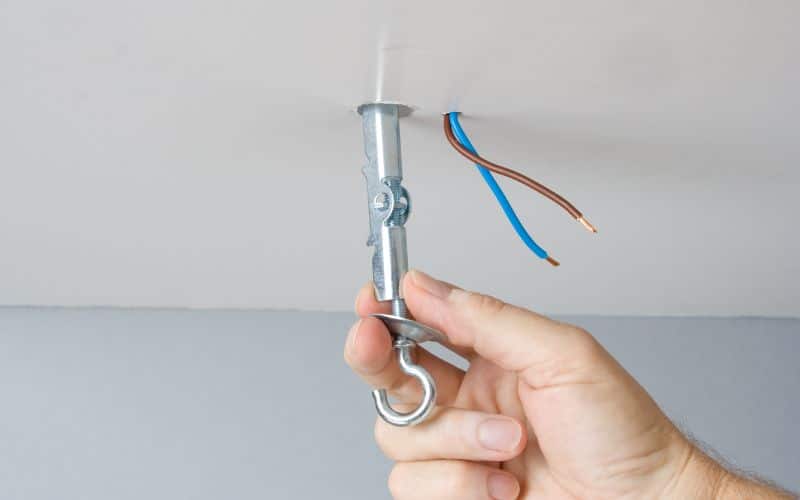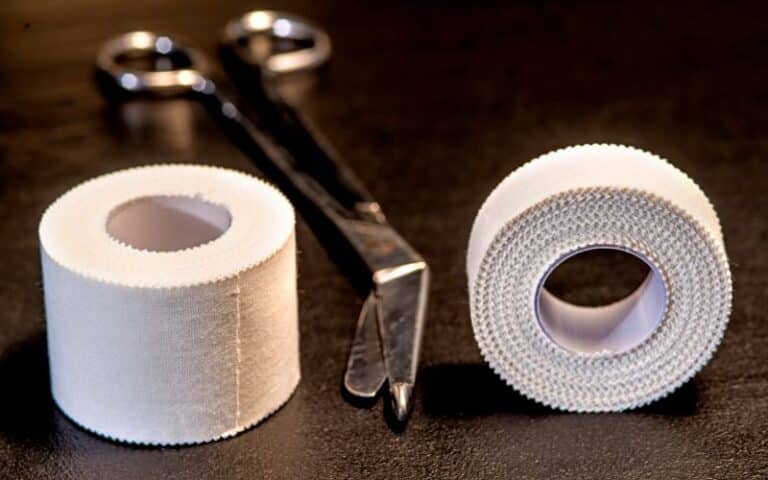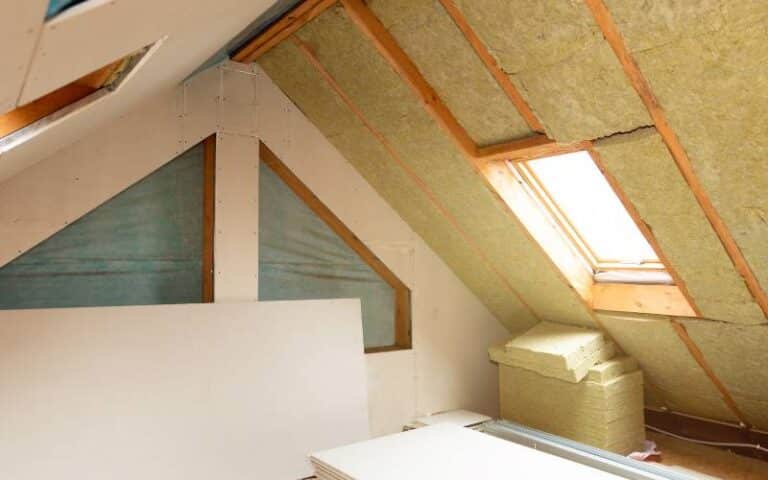You need to possess a certain amount of knowledge and skill to hang heavy objects on your drywall securely.
And if you’ve ever tried to hang objects, especially heavy ones, on drywall, then you know how risky the process is. Worse still, when you have limited knowledge of the tools to use.
So, in this article, you’ll learn the proper use of toggle bolts, where you can use them, and how to fasten them to your drywall.
Yes, you can use toggle bolts in drywall. Toggle bolts are among the strongest anchors for hanging items on drywall and other hollow walls. They help to hang heavy objects on almost any type of drywall and hollow walls.
In this article, you’ll learn how and when to use toggle bolts for securing drywalls. And by the end, you’ll surely have learned how to secure your drywall using these tools confidently.
Ready for a Drywall Quiz?
Can I Use Toggle Bolts in Drywall?

Yes, you can use toggle bolts in drywall, but there are some things to remember.
Toggle bolts help support heavy objects in hollow walls, such as drywall.
They consist of a screw with a spring-loaded wing-like mechanism on one end that expands behind the wall when you insert a screw.
And this creates a sturdy anchor point that can hold much weight.
That said, you can try to use toggle bolts in drywall by following these steps:
- Drill a hole in the drywall slightly larger than the diameter of the toggle bolt.
- Insert the toggle bolt into the hole and push it through until the wings are completely inside the wall.
- Pull back on the bolt to engage the wings and tighten the screw until it’s snug.
- Test the strength of the anchor by pulling on it gently. Then, if it feels secure, you can attach your object to the bolt.
Nevertheless, remember that toggle bolts aren’t ideal for all situations.
They work best in thicker, solid drywall or other materials like plaster, where the toggle can properly grip the wall material.
So, if your drywall is thin or damaged, toggle bolts may not be strong enough to hold the weight of your object.
Thus, in such cases, you may need to use other types of anchors or consult a professional for guidance.
Although toggle bolts can be a good option for hanging items on drywall, whether they are the best option depends on several factors.
Such as the weight of the item you are hanging and the thickness and condition of the drywall.
That is because toggle bolts can securely hold heavier items, such as shelves or cabinets, to drywall.
They do this by expanding behind the drywall when the bolt tightens.
However, they can be difficult to install and may require drilling a larger hole in the drywall than other types of fasteners, which can weaken the drywall.
Therefore, other fasteners, such as picture frames or small shelves, maybe a better option for lighter items, such as picture hangers, adhesive hooks, or threaded anchors.
These fasteners are generally easier to install and may cause less damage to the drywall.
Ultimately, the best option for your specific situation will depend on the item’s weight, the location of the installation, and your personal preferences.
It may be helpful to consult with a hardware store or a professional contractor to determine the best type of fastener for your needs.
But you may want to consider the following reasons when choosing toggle bolts over other anchors for your drywall.
#1. Limited Weight Capacity
Toggle bolts are designed to support heavy loads but have a limited weight capacity. So, depending on the size of the toggle bolt, it may only be able to support between 50 – 100 pounds.
If you need to hang something heavier than this, you may need to use a different type of anchor.
#2. Large Hole Required
To install a toggle bolt, drill a relatively large hole in your drywall. This process can be unsightly and difficult to patch if you ever need to remove the anchor.
Additionally, if you accidentally drill the hole too big, the toggle bolt may not hold securely in the wall.
#3. Limited Shear Strength
While toggle bolts are great at supporting loads that pull straight down on the anchor, they don’t have much shear strength.
That means the toggle bolt may not hold up if you try to hang something that puts pressure on the sides of the anchor (like a shelf that’s not flush against the wall).
#4. Not Ideal for Thin or Fragile Drywall
Toggle bolts can be too powerful for thin or fragile drywall and may even cause it to crack or break when inserted.
Overall, toggle bolts can be a useful anchor for some situations. But, there are often better alternatives depending on the weight of the object you want to hang and the condition of your drywall.
So, you should always consult a hardware store or a professional handyman to help you choose the right anchor.
How Much Weight Can a Toggle Bolt Hold in Drywall?
A toggle bolt’s weight in drywall depends on a few factors, such as the size of the toggle bolt, the thickness and strength of the drywall, and the condition of the surrounding area.
As a general rule of thumb, a toggle bolt can hold between 50 to 100 pounds in 1/2-inch drywall.
However, this weight capacity can vary based on the factors mentioned above.
For instance, a larger toggle bolt, such as a 3/8-inch or 1/2-inch one, can hold more weight than a smaller one.
Similarly, if the drywall is thin or weakened by moisture or damage, it may not be able to support as much weight.
So, it’s always a good idea to use multiple toggle bolts or other anchors to distribute the weight across a larger area and minimize the risk of the anchor pulling out of the drywall.
Additionally, it’s important to follow the manufacturer’s installation instructions carefully and use the appropriate tools for the job.
How Do You Use Toggle Bolts in Drywall?
Toggle bolts are useful for hanging heavy objects on drywall.
Here are the steps to use toggle bolts in drywall:
- First, choose the right size toggle bolt for your application. Toggle bolts come in different sizes and weight capacities, so you need to choose the right one for the weight of the object you want to hang.
- Drill a hole in the drywall slightly larger than the toggle bolt. Use a drill bit the same size as the toggle bolt’s folded toggle wings.
- Insert the toggle bolt into the hole and ensure the wings fold against the bolt.
- Hold the bolt in place and use a screwdriver to turn the bolt clockwise. As you turn the bolt, the wings will unfold and press against the back of the drywall.
- Continue turning the bolt until it is snug against the wall. Don’t over-tighten the bolt, as this can damage the drywall or cause the wings to break off.
- Attach your object to the bolt using the included screw or hook. Ensure the object is centered and level before tightening the screw or hook.
- Test the strength of the anchor by gently pulling on the object. If it feels secure, then it is.
Are Toggle Bolts Stronger Than Drywall Anchors?
Toggle bolts are generally stronger than drywall anchors, and this is because toggle bolts can distribute weight over a larger area of the wall.
While drywall anchors rely on the integrity of the drywall to hold the weight.
Toggle bolts consist of long bolts with wings that fold back and expand behind the wall when you tighten them.
That spreads the weight over a larger area and provides a more secure hold.
In contrast, drywall anchors typically consist of a plastic or metal sleeve that you can insert into a pre-drilled hole in the drywall.
When a screw enters the anchor, it expands and creates a hold. However, the anchor may not provide a secure hold if the drywall is weak or damaged.
Toggle bolts are generally better for hanging heavy items such as shelves, mirrors, or TV mounts.
While drywall anchors are suitable for lighter items such as picture frames or towel bars.
However, it’s important to choose the appropriate fastener for the weight of the item you are hanging and the condition of the wall.
Nevertheless, if you’re unsure, it’s always best to consult a professional or choose a heavier-duty fastener to be safe.
Toggle bolts are typically stronger than drywall anchors because they distribute the weight of the hanging object over a larger drywall surface area.
And this is achieved by using a toggle mechanism that expands behind the drywall when the bolt tightens, creating a secure hold.
On the other hand, drywall anchors rely on friction to hold the object in place. Therefore, they can grip the drywall from the inside and create a tight hold.
While they can be effective for lighter objects, they may not be strong enough to support heavier items.
In addition, toggle bolts are often made of stronger materials such as steel or stainless steel, while drywall anchors may be plastic or weaker metals.
These materials also contribute to the overall strength of the fastener.
Toggle bolts are more reliable for hanging heavier objects on drywall, while drywall anchors are better suited for lighter items.
However, it’s important to select the appropriate fastener for the weight and size of the object you want to hang and to follow the manufacturer’s instructions carefully to ensure a secure hold.
Nevertheless, there are other facts besides the strengths of these two materials that you may want to consider before picking one over the other.
And they are contained in the table below:
| Toggle Bolts | Drywall Anchors |
|---|---|
| Support heavy items better | Install easier |
| They are more versatile | They are specifically for use on drywalls |
| They provide more stability | They are more expandable |
| They are more widely available | You can only get them in a limited quantity. |
| More convenient for hanging lighter items | It has a wider range of items to use with it. |






